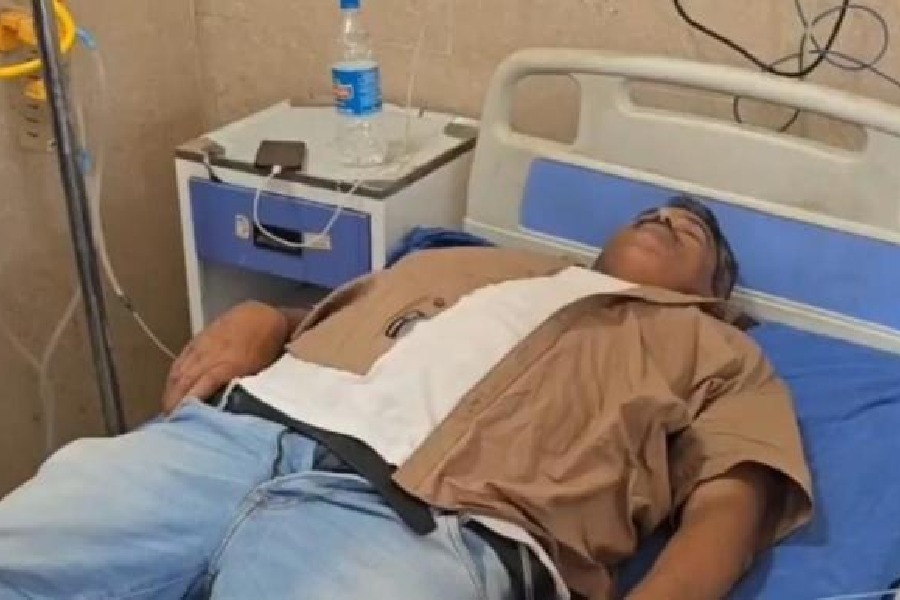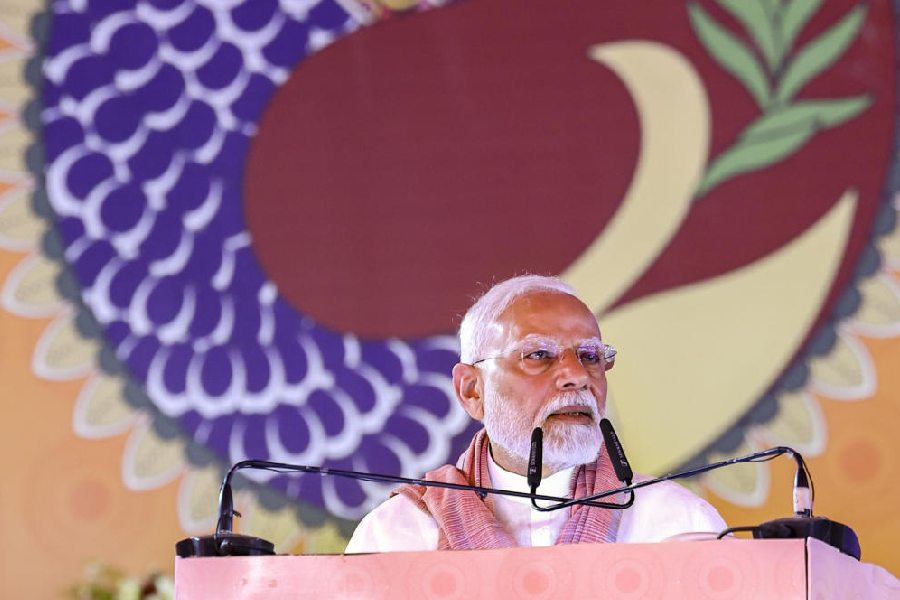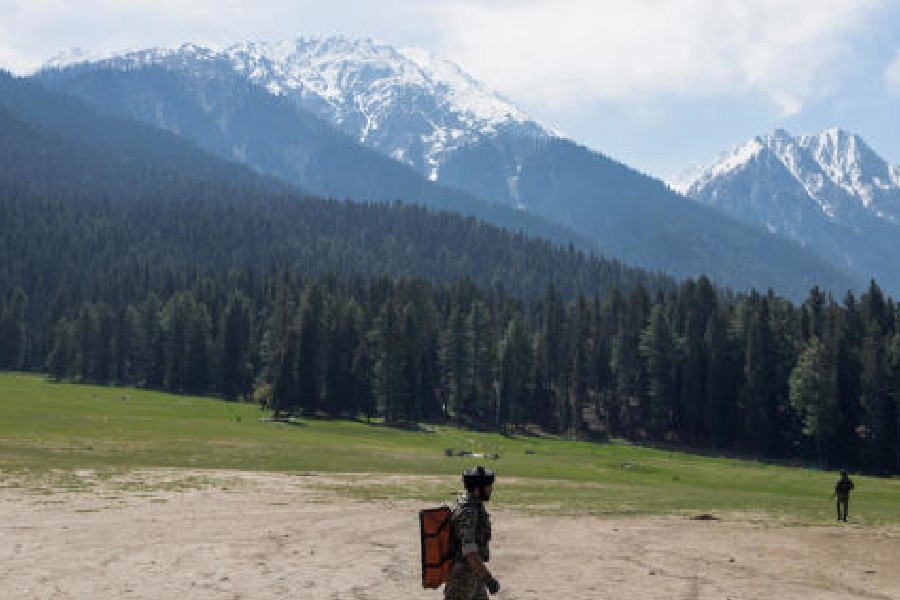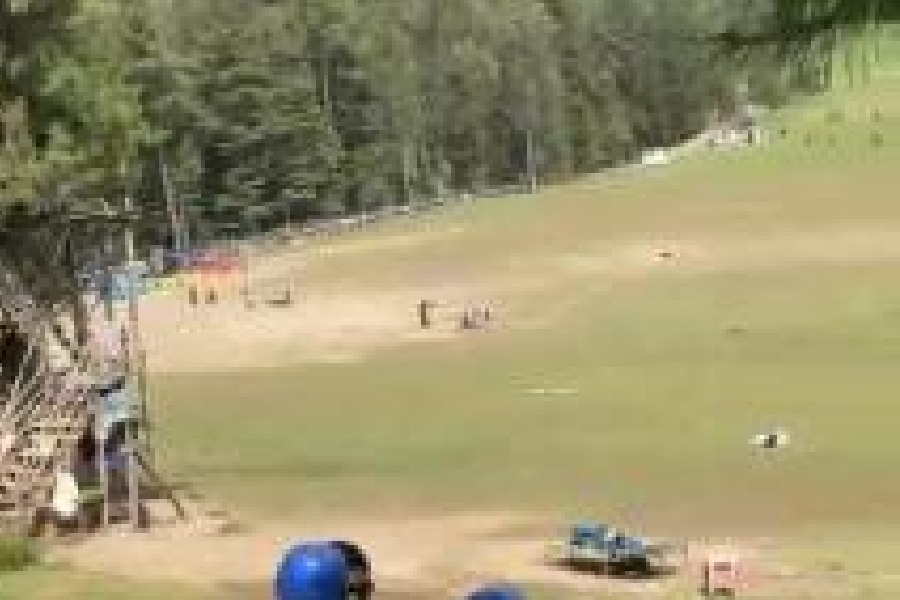 |
| Setu. Picture by Aranya Sen |
Remember the camera chasing Aamir Khan around a class full of bewildered children or some of those surreal moments that come alive in Aamir’s directorial debut Taare Zameen Par.... The man behind all these moments is Calcutta boy Satyajit Pande, better known as Setu. The 34-year-old was back in town for his usual “break” and a reunion with his old band mates Easy Riders, singing and jamming at Princeton Club. A t2 chat...
You are a true-blue Calcuttan...
I’ve always belonged to Calcutta. I was born here and did my schooling and graduation from St Xavier’s. I used to live on Mayfair Road but shifted to Mumbai seven years ago. I’ve shot some commercials and documentaries in Calcutta and keep coming back as often as possible. It’s been my source of sustenance.
How did you get into cinematography?
I’m related to documentary film-makers Ranjan Palit and Vasudha Joshi, who are my uncle and aunt. They have been a great influence. While I was doing my B. Com I used to land up at Ranjanda’s shoots and watch him film his documentaries. I used to do basic production work, hold a thermocol, give bounce lights and simply hang around. I was always into stills but had never thought I’d take it up professionally. I had always been a good student and my family wanted me to stick to conventional areas. They were quite reluctant at first since I’d already cleared my CA, but I eventually turned my hobby into my career.
Where did you train?
 |
 |
 |
| Moments from Taare Zameen Par |
I got into FTII in Pune where I studied cinematography for three years. I spent a lot of time watching films and doing hands-on cinematography before moving to Mumbai after passing out in 1999. I’ve been settled there for seven years.
What were you doing before Taare Zameen Par?
I’ve mainly been shooting documentaries such as Jari Mari for Surabhi Sharma, Dam/Age a film on Arundhati Roy by Aradhana Seth. I’ve done quite a few commercials like Yamaha, Maggi, Reliance, ICICI. I have also been assisting Ranjanda and cinematographer Rafey Mahmood, off and on.
Rafey, who shot Tigmanshu Dhulia’s first film Haasil, was busy with other assignments when I got the offer to do the camera for the film called Charas starring Irrfan and Jimmy Sheirgill. I’ve also shot a Bengali film called Nirakar Chhaya (Shadows Formless) by Ashish Avikunthak, which was screened at Locarno last year. I’ve done two short films, one of which called Reflections by Vijay Nambiar won me an award for Best Cinematography at the New York Short Film Festival. In 2006, I did a video installation called Manus with video shots of people’s hands symbolic of a story behind each, that was shown at art houses in the US and Europe. I keep doing diverse things within the spectrum of image-making.
How did Taare happen?
It happened quite simply in fact. I was among the few who were short-listed. They had asked for my show reel. There was no feedback for a while and then I got a call from Aamir Khan Productions when they told me the film was on! We started shooting from September 2006.
How was Aamir as a director? Did he have any special instructions for you?
Aamir was very clear and sure about what he wanted. He was very particular about keeping in mind certain things when working with kids. Kids have a short attention span and they are not trained actors so it was important to capture them the moment they were ready. There was no question of delaying or taking time to ready a shot. The brief to me was to make it as simple as possible instead of getting into complicated light set-ups to allow flexibility and manoeuvrability so as not to lose the performance of the kids. And that I think has really worked for the film. The overall simplicity in the storytelling makes it a very down to earth, real experience.
What was the most challenging part of the Taare shoot?
Working with kids is always a challenge but a lot of fun too because of the energy they bring to the sets. You have to let the kids be kids. Not turn them into grown-ups. It was important to let them be at ease during a performance and not let them feel the hoo-haa that goes on during a shoot. When they were doing what came naturally, we would capture whatever they’d give or all that was happening, for its spontaneity.
Any scene or sequence that you particularly remember?
Emotionally, yes. There is this time when Ishaan is getting ready to go for the art mela. I was kind of overcome by Darsheel’s performance. The raw emotion and the look on his face. As a director of photography you’re always the first one to see it and knowing the point of the story and seeing it in context really moved me. Darsheel’s fantastic. He’s such a bundle of energy. Full of life, uninhibited and “bindaas” like he says it in the film. Never had too many instructions for him for it might have confused him.
How did you work on such minute visual details?
Every detail that was thoroughly shot was a part of the script. For me it was a question of translating them into celluloid. Aamir and me both agreed that the film was to look absolutely natural. No gloss and shine but slices of life with normal contrast and natural flesh tones.
TZP being a very real film, time and space were also very important in order to see it in real context. We were particular about elements like a streak of sunlight streaming in through the classrooms in the afternoon or an evening scene when his parents are leaving for that dim and depressing feel that comes with the setting sun. They make for memorable visuals one can associate with.
Did you need to prepare hard?
As a part of the core unit we went to schools for special children to understand them better. We shot with four cameras for the title song sequence. Shiamak (Davar) takes workshops with some of these special kids who we’ve captured on frame. They were going to have two concerts. We went to the first one to see them perform and get used to working with them before the actual shoot. Then went on to shoot the second concert. We had placed the cameras to film the live performance of the children and their parents’ reactions to make it as natural as possible.
What next?
Talks are on with certain film-makers... so let’s see what materialises. People have appreciated the film and hence the camerawork. I’m keen on films but am being a little careful about taking up a feature because it can take six to 18 months of your life. So I need to keep in mind the director and script backed by a good production house. At present I’m back to doing documentaries and commercials. Very soon I’ll start shooting for a documentary on pregnancy by Surabhi Sharma and travelling around the country for another by Vasudha Joshi who’s making a film on the blues.










